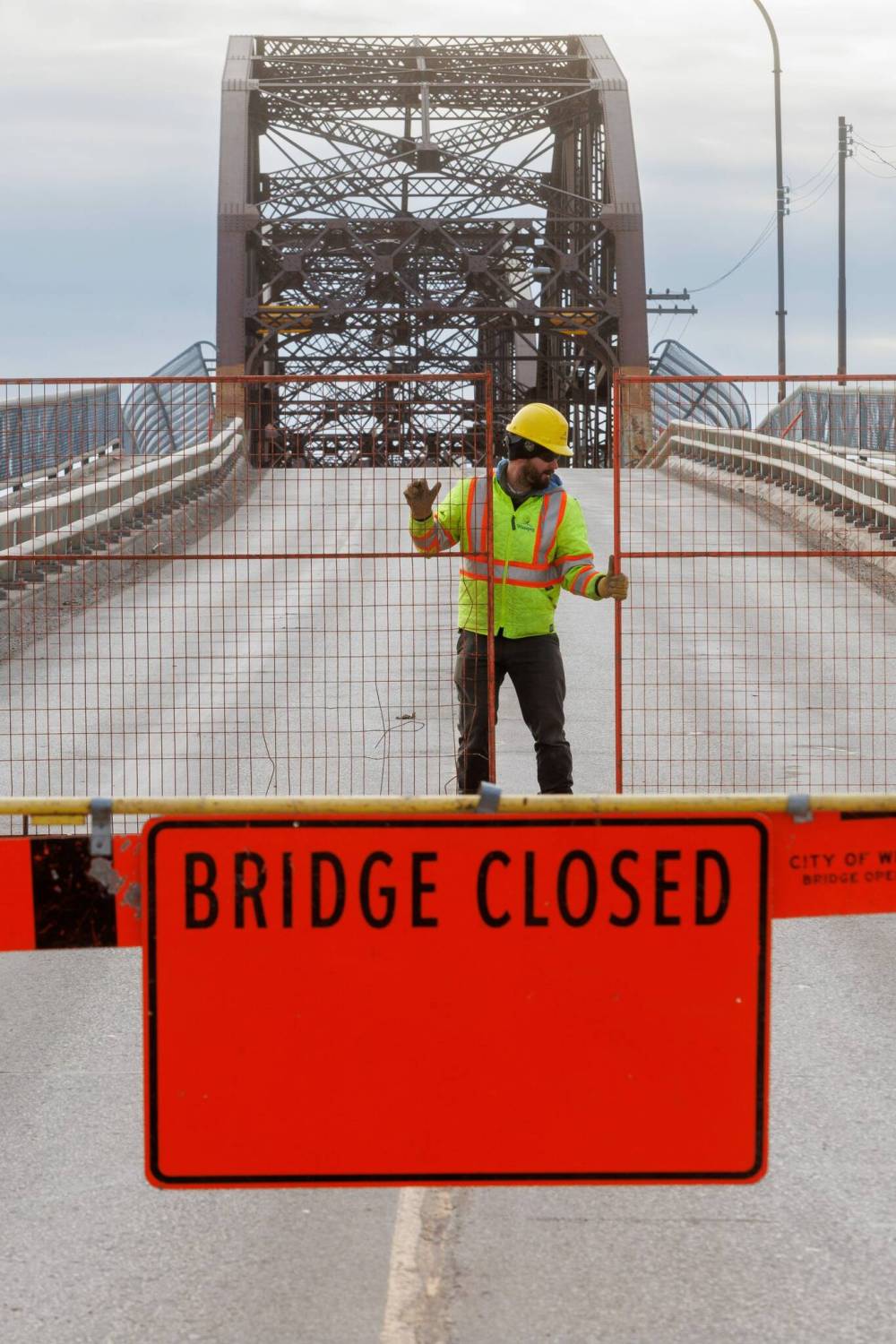Bridge closure an opportunity
Advertisement
Read this article for free:
or
Already have an account? Log in here »
To continue reading, please subscribe:
Monthly Digital Subscription
$0 for the first 4 weeks*
- Enjoy unlimited reading on winnipegfreepress.com
- Read the E-Edition, our digital replica newspaper
- Access News Break, our award-winning app
- Play interactive puzzles
*No charge for 4 weeks then price increases to the regular rate of $19.00 plus GST every four weeks. Offer available to new and qualified returning subscribers only. Cancel any time.
Monthly Digital Subscription
$4.75/week*
- Enjoy unlimited reading on winnipegfreepress.com
- Read the E-Edition, our digital replica newspaper
- Access News Break, our award-winning app
- Play interactive puzzles
*Billed as $19 plus GST every four weeks. Cancel any time.
To continue reading, please subscribe:
Add Free Press access to your Brandon Sun subscription for only an additional
$1 for the first 4 weeks*
*Your next subscription payment will increase by $1.00 and you will be charged $16.99 plus GST for four weeks. After four weeks, your payment will increase to $23.99 plus GST every four weeks.
Read unlimited articles for free today:
or
Already have an account? Log in here »
Hey there, time traveller!
This article was published 01/12/2023 (725 days ago), so information in it may no longer be current.
“In the midst of every crisis, lies an opportunity.”
Those are the words of physicist Albert Einstein, but it doesn’t take an Einstein to recognize an opportunity amid the civic crisis caused by the indefinite closure of the 111-year-old Arlington Street Bridge.
The opportunity lies not in building a new bridge to replace the aging structure that spans Winnipeg’s eyesore: the Canadian Pacific Railway yards.

MIKE DEAL / WINNIPEG FREE PRESS Files
City of Winnipeg crews install barriers on the north end of the Arlington Street Bridge. The bridge which opened in 1912, has been closed indefinitely.
Instead, the city can build a bridge to a new tomorrow: move the rail yards out of the city entirely and heal a geographical scar that has created an economic, cultural and political divide that has kept the North End separated from much of the prosperity the rest of the city has enjoyed for more than a century.
The rail yards currently encompass almost 300 hectares of land — about a quarter the size of the Waverley West development that expanded the city further southward in the 21st century — which could be used for the future neighbourhoods of a growing Winnipeg.
It would create a massive infill development that would bring new homeowners far closer to amenities that already exist, such as shops, schools and fire and paramedic stations, rather than seek out more land on the city’s outskirts for new housing and infrastructure to support the new urban sprawl.
While the rail yards might require land remediation — diesel-powered locomotives have chugged back and forth over the kilometres of track and sidings for decades — Winnipeg already has examples of what can be accomplished with former railway property.
Redevelopment of the Fort Rouge Yards, which Canadian National Railway owned and operated from the early 1900s to 1975, when they were turned over to the city, have led to new condominiums and rental apartments in the South Osborne area, when they became the largest infill development in Winnipeg’s history.
Winnipeg’s most shining example of the transformation of railway land is The Forks.
Rail yards and old terminal buildings fronted some of Winnipeg’s most valuable riverfront property at the junction of the Red and Assiniboine rivers.
Old terminal buildings were converted into shops, museums and restaurants. Some of the most scenic land in the city, where Indigenous people first congregated thousands of years ago, was set aside for recreational and public-art uses.
Edmonton did something similar when it converted an old Canadian Pacific rail yard north of its downtown. Emerging from the tracks were the new campus for MacEwan University, and later the Rogers Place hockey arena and accompanying residential and commercial spaces catering to both major landmarks.
CentrePort Canada, which already is North America’s largest inland port, has the room, zoning requirements and most importantly, related businesses, which might convince CP of the economic benefits of a move.
It would also keep more hazardous rail cargo from rolling through Winnipeg, a safety concern borne true after runaway oil tank cars exploded in Lac-Mégantic, Que., in 2013, killing 47 people.
It’ll be costly to transform the CP rail yards into new neighbourhoods, but so will a replacement bridge.
The city ought to use the estimated $330-million a new bridge would cost as seed money for to build new districts, which could attract grants from the provincial and federal governments, both of which seek answers to Canada’s housing shortage.
To build a new bridge would be akin to doing nothing, and Winnipeg city councils for more than a century have proven doing nothing is indeed a decision.
Instead of choosing the status quo, Winnipeg must recognize they have a swan of an opportunity that can spring up from what has been an ugly duckling.
History
Updated on Tuesday, December 5, 2023 11:54 AM CST: Corrects reference to Indigenous people, corrects spelling of Lac-Mégantic









